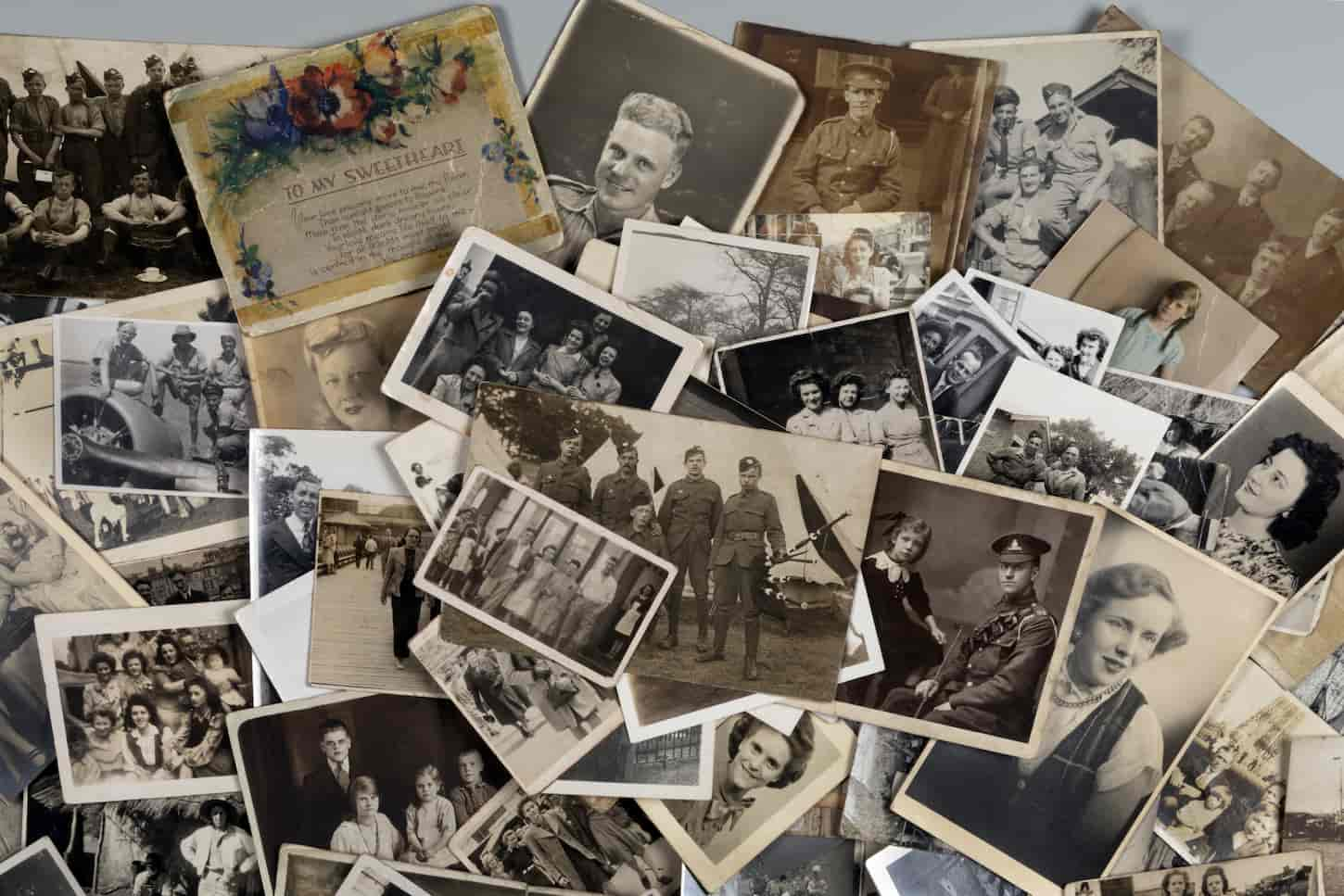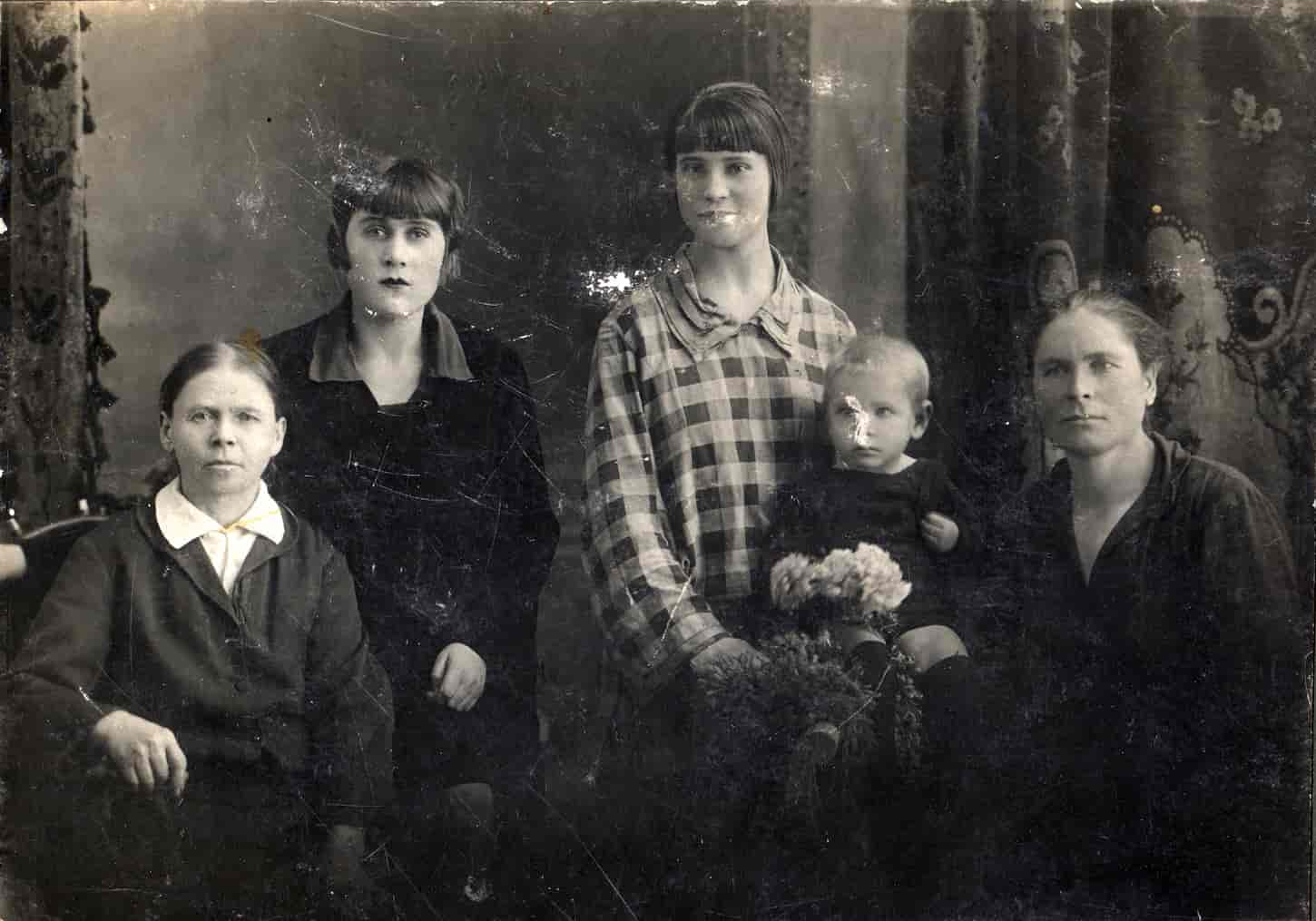You can find Italian culture in cities all over the globe, especially here in America. At the beginning of the 20th century, 4 million Italian immigrants lived in the USA. Today, over 16 million of their descendants identify as Italian-American. So, if there are tales of European relatives in your family, you might be wondering how you find out if you’re of Italian descent.
Speak to your relatives to find out if you have any Italian links in your family. Gather information such as names and birthdates and use this information to start a family tree. You can also take a DNA test to see if you have Italian heritage.
Researching your family history is fun, satisfying, and rewarding, especially if your search leads you abroad. But how do you search for your family history in another country such as Italy? Take a look at this vital information below to make the search for your Italian relatives much easier.

How Do You Find Out What Your Heritage Is?
If you want a precise, genetic description of your family heritage beyond family lore, you can do a DNA test. You can also use a range of resources, such as ancestry websites and local records, to discover your family’s past.
Speak to as many family members as you can to gather information about your family history. Ask for specific details such as names, addresses, occupations, birth, death and marriage dates, ethnic background, and military service. The more information you have, the easier it will be to find records.
To scientifically verify their heritage, many people take a DNA test. A DNA test can give you information about your earliest ancestors, as well as your recent genetic makeup. A DNA test is a good option for people who can’t access their family’s records.
Want to know the best DNA test for your situation? Make sure you read our guide here: Which Genealogy Test is Best? (Answers and Why).
How Do I Find Out if I Have Italian Ancestry?
If you have an Italian name, and there are tales of European immigrants in your family, this is a sign you may have Italian heritage. Take a look at local immigration records to confirm if your family came from Italy.
Unlike many early American immigrants, Italians came to the USA quite late. Before 1850, there were only 4,000 Italians in the USA, and in 1870 there were 25,000. Italian immigrants who arrived during this period were generally from the North of Italy.
Italy became unified in the 1860s, and after this, masses of Italians headed to the United States, and by 1914 there were over 4 million Italian immigrants in America. Most immigrants during this time were from Southern Italy, which was less developed than the north. After the unification, they moved to the USA to flee poverty and hardship.
By the time most Italian immigrants arrived, there was no more cheap land for sale, so lots of Italians stayed in the cities for work. Italian communities sprung up in places like New York, Pennsylvania, Boston, Chicago, and Philadelphia.
Many Sicilians settled in New Orleans, the Napolitains and Calabrians settled in Minnesota, and many Northern Italians headed to California. Italians also settled among other immigrant groups such as the Jews, Irish and Polish.
When you’re searching for your Italian heritage in the USA, be aware that some Italian ancestors may have Americanized their names. Giuseppe would become Joe, for example. Common Italian surnames to look out for include Russo, Marino, Romano, and Rossi.
If you find Italian ancestors, chances are, after just a few generations, you’ll have to continue your search through Italian records.
How Do I Find My Family History in Italy?
To find your family history in Italy, you need to know which province or parish they came from. If your family immigrated to Italy in the 1800s, you might be able to find out exactly where they came from in the immigration records of the National Archives and Records Administration (NARA).
The NARA has a list of over 800,000 Italian immigrants who arrived between 1855 and 1900. If your ancestors are listed, their records will tell you which region they came from in Italy.

How Do You Research Genealogy in Italy?
To get a real taste of your past, you can travel to Italy to investigate local records. However, you don’t have to fly to Europe to discover your Italian ancestors. Online, you can find plenty of genealogy information, including church and civil records from Italy.
Overall, Italy has a massive range of well-documented archives, and lots of them are digitized. However, Italian records are in Italian, so invest in an Italian dictionary or be prepared to use an online translation tool for your research.
Italian Church Records
Italian church records start from the year 1500. From the 1600s these records are sometimes known as Status Anamari or the Status of the Soul.
Church records in Italy are very consistent because they’re not affected by politics, unlike civil records. You can find birth, death, baptism, and marriage certificates, as well as addresses in church records. To access their church records, you need to know which parish your Italian ancestors came from.
Comuni Italiani
The Comuni Italiani is a comprehensive list of municipal offices in Italy where you can find all the towns in each province.
Use the Comuni Italiani to help you find the registry office of the parish of your ancestors.
If you find that the town where your ancestors came from no longer exists, usually the records will be in a nearby Mother Church or Cathedral.
Portale Antenati
The Portale Antenati literally translates as the Ancestors Portal. At the Portal Antenati, you can access information from the Italian national archives.
The archives include official information such as addresses, birth and death dates, and military service. Not all the archives are digitized, but there are plenty available on the portal. What’s more convenient is that the website is available in English, and it’s free to use.
Does Italy Have Census Records?
Italy has very well-organized census records which makes your search for Italian ancestors much easier. The census records began in 1871 and have been carried out every ten years since.
The census records from 1871 to 1901 are renowned for being sketchy and incomplete. After 1901, the census records were more comprehensive. The census archives are held locally in each province.
The main census in Italy is known as the Censimento. However, there are two earlier censuses in Italy, known as the Riveli de Beni and the Catasto Onciario. The Riveli de Beni is a census from Sicily in the 1500s. The Catasto Onciario is one taken in Naples between 1742 to 1753.
Quick note: most European records in general only go back to the 1500s, so Italy is right on track for old records.
Want to know the one region of the world that has records back to 1500 B.C.? Go read our article: Ancestry: How Far Back Do Records Actually Go? to find the answer.

How Do I Find Birth Records in Italy?
You can find birth records for Italian ancestors who lived between 1500 to 1808 in church records. For ancestors after 1808, you can find their details in the Italian civil records. However, not all regions had a civil register until 1881.
The first attempt at Civil records came from Napoleon in 1806 and is known as Stato Civile Napeleanico. From 1815 to 1865 the civil records are known as Stato Civile d’ella Restaurazione. After 1865 and to the present-day state records are known as Stato Civile Italiano – The Italian Civil Registration.
For the best chances of finding Italian birth records, use a mix of sources. In addition to civil and church records, use online ancestry resources too. The data on genealogy websites is increasing each year, and they’re becoming one of the most effective ways to find birth certificates.
Does Ancestry Have Italian Records?
Ancestry has some of the most comprehensive Italian records of all the genealogy sites. You can find Italian passenger lists, immigration records, military records, births, marriage and death certificates, as well as maps, newspapers, and other historical resources on Ancestry.
Furthermore, Ancestry offers a unique feature with its DNA test kits. They will match you with other participants who share your DNA, and you can contact them via a Secure messaging system.
FamilySearch is another fantastic resource for searching for Italian records. The service is free, and they have over 60 million family trees and over 150 million Italian historical records.
Ancestry.com is definitely one of the best genealogy sites, but you may also want to look at these other website options we reviewed for you if Ancestry’s pricing is not yet in your budget.
How Do I Know if I Have Italian Blood?
If you have Italian relatives, chances are, you have some Italian blood in your veins. If you can’t find records of your ancestors, one way you can confirm you have Italian blood is with a DNA test.
Italian family culture is distinctive and easy to identify. Italians are known for their strong family values, Roman Catholic beliefs, and unique cuisine. Italians are generally graceful, dignified, elegant, and very social. If these traits run in your family, it could indicate Italian bloodlines.
Note from Kim: Loving pasta and Italian cuisine doesn’t automatically make you Italian, but it does make you awesome.
How Much Italian Do You Have to Be to Be Considered Italian?
Italy will consider you as one of its own if you have an Italian parent, grandparent, or great-grandparent. Italian descendants can claim citizenship under the ”Jure Sanguinis” which means the right of blood.
Italy only became a nation in 1861, so no one is considered an Italian citizen before this date. If you have an Italian grandparent, citizenship isn’t an automatic right. You have to provide plenty of supporting documents to apply for Italian citizenship.
Over the centuries, the Italian borders have changed a lot, and you can’t get citizenship if your family lived on the wrong side of the border. Furthermore, descendants of female Italians are only recognized for citizenship if they were born after 1948.
What Makes up Italian Ethnicity?
The ethnicity of Italian people is diverse. Overall, Italians have a mix of different skin tones, eye colors, and hair colors. In Northern Italy, people are genetically related to central and western Europeans. While in the south, people are more related to the Greeks, Turks, and Israelis.
Italy is a prime spot on the Mediterranean, and many different cultures have inhabited it over the years. People from Spain, France, and Germany, invaded Italy from the north, overland. While in the south, people such as the Greeks invaded from the sea.
The ethnicity of the native people on the Italian islands is slightly different from those on the mainland. People from Sicily and Sardinia also have a North African influence on their genes.

Is Italians Latino?
The short answer to this question is, yes, Italians are the original Latino people. However, in the USA, Latino refers to a South American culture. So even though Italians are the original Latino people, in the USA, we don’t call Italians Latinos.
Italians are the direct descendants of the Romans, who spoke Latin. Many modern languages come from Latin, including the romantic languages, French, Spanish and Italian. Italian is the closest language to Latin, and in this sense, Italians are the original Latinos.
Here in the USA, “Latino” (or Latinx) usually refers to someone from Central, South, Latin America, or Brazil who speaks Spanish or Portuguese. Here in America, the term Latino typically doesn’t include people who speak Italian and French.
Where Did Italians Come From?
Many people associate Italians with the Romans. However, Italy was inhabited before the Romans arrived. The Celts, Byzantines, Germanic tribes, Spaniards, and Carthagens, all settled in Italy before the Romans, and before them, the Etruscans dominated ancient Italy.
The Etruscan civilization thrived in Europe between the 8th and 3rd century BCE, and they were one of the first superpowers in the Mediterranean. The Etruscans established the first cities in Italy and were based in the north, which they called Etoria.
The Etruscans were the first civilization to inhabit Italy, but overall, modern Italians come from a range of different people from all over Europe and the Near East
Next Steps
If you want to discover your Italian heritage, start by asking your family lots of questions. Find out about birth, death, and marriage dates and use these to scour online and local records. Often with Italian ancestry, your search will quickly lead you to Italian archives.
Luckily, Italy has digitized most of its archives, so you can research genealogy in Italy from the comfort of your own home. For the best chances of finding out about your Italian ancestors, use local records, together with online resources such as ancestry websites.
Need some help getting going? In her free time, Breanne loves helping people with their genealogy. You can click here to go see if she’s got any availability or to get added to her waitlist.
Or if you’d rather read more about Italian family history, make sure you read our article that answers this common question: Can Anyone Today Trace their Family to Roman Times? The answer will surprise you!

Resources
When learning about genealogy, it’s important to learn from various reputable sources. These are the sources used in this article and our research to be more informed as genealogists.
- “The Etruscans, an Introduction (Article).” Khan Academy, www.khanacademy.org/humanities/ap-art-history/ancient-mediterranean-ap/ap-ancient-etruria/a/the-etruscans-an-introduction. Accessed 13 Jan. 2022.
- Fiorito, Giovanni, et al. “The Italian Genome Reflects the History of Europe and the Mediterranean Basin.” European Journal of Human Genetics, vol. 24, no. 7, 2015, pp. 1056–62. Crossref, doi:10.1038/ejhg.2015.233.
- “Getting Started With Italian Genealogy.” Ancestry Corporate, www.ancestry.com/corporate/blog/getting-started-with-italian-genealogy. Accessed 12 Jan. 2022.
- “Italian Culture.” Cultural Atlas, culturalatlas.sbs.com.au/italian-culture/italian-culture-core-concepts. Accessed 12 Jan. 2022.
- “Italian Genealogy.” Italy Heritage, www.italyheritage.com/genealogy. Accessed 12 Jan. 2022.
- “Italian Genealogy Research—How to Find Italian Records.” • FamilySearch Blog, 18 Nov. 2021, www.familysearch.org/en/blog/italian-records-genealogy-research.
- “The Italians in America.” Americacallsitaly, www.americacallsitaly.org/emigrazioni/italian.htm. Accessed 12 Jan. 2022.
- “Italy Genealogy and Italy Family History Resources – Ancestry.Com.” Ancestry, www.ancestry.com/search/places/europe/italy. Accessed 12 Jan. 2022.
- National Geographic Staff. “8 Tips to Help Find Your Family Tree.” Travel, 4 May 2021, www.nationalgeographic.com/travel/article/genealogy-heritage-travel-roots-tips.
- Paschou, P., et al. “Maritime Route of Colonization of Europe.” Proceedings of the National Academy of Sciences, vol. 111, no. 25, 2014, pp. 9211–16. Crossref, doi:10.1073/pnas.1320811111.
- US Census Bureau. “Italian-American Heritage and Culture Month: October 2021.” Census.Gov, 8 Oct. 2021, www.census.gov/newsroom/stories/italian-american-heritage-culture-month.html.

